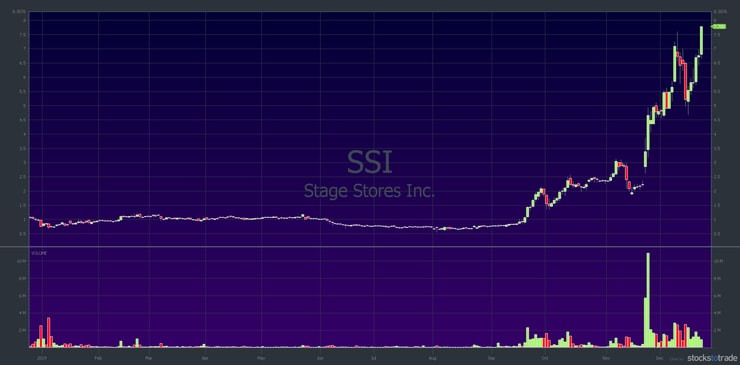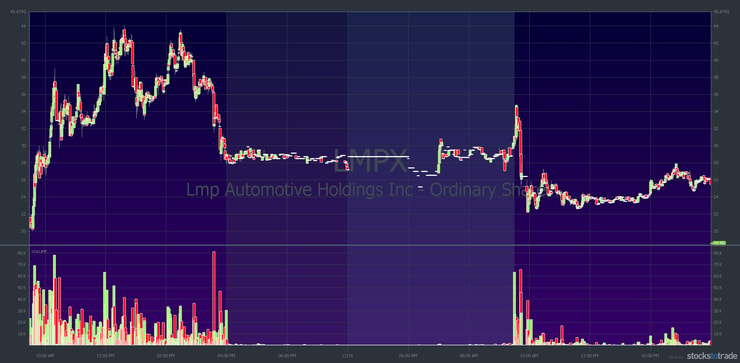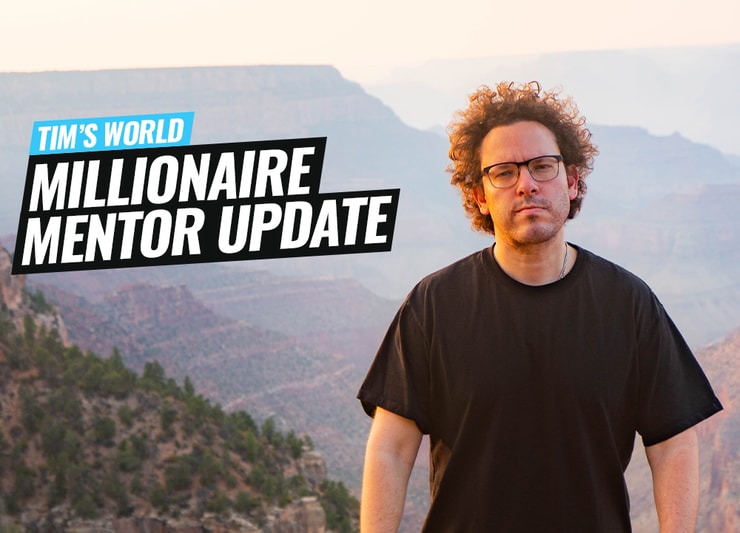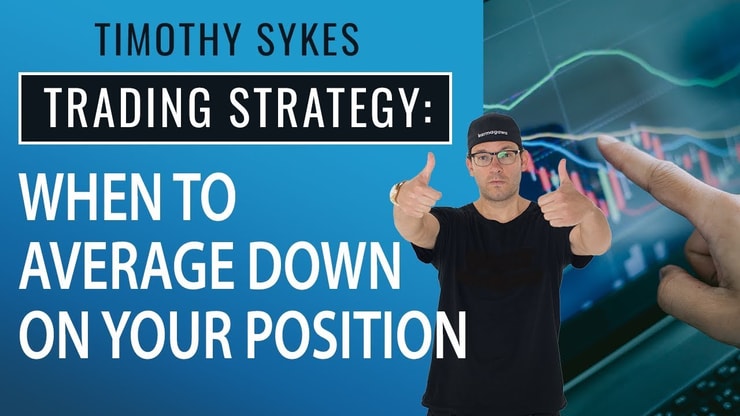Want to know how to survive the holidays as a trader? You do? Good. Get ready for some tough love.
Last year, my Chanukah gift to you was about lessons earned. After you read today’s update go back and read that post — it’s important.
As for today — and the coming year — use this edition of the update as motivation. Get off your butt and make the holiday season a launchpad for next year. Next week, I’ll tell you how to make 2020 the best year of your life. Consider this edition of the update my tough-love gift to you.
First…
Table of Contents
- 1 Karamagawa Built Schools and Libraries: 67 and Counting
- 2 Penny Stock Trader’s Holiday Survival Guide
- 3 Questions From Trading Challenge Students
- 4 Millionaire Mentor Market Wrap
Karamagawa Built Schools and Libraries: 67 and Counting

Karmagawa, the charity I co-founded with @badboi Mat Abad, supports many worthwhile causes.
One of the most important is building schools and libraries. Last week we opened 10 new libraries near Tulum in Mexico’s Yucatán state. That brings the total number of schools and libraries we’ve opened to 67. Our goal is to build 1,000, so we’re gradually getting there.
We’re really proud of the work we do to help children get an education. And working with Save the Children in Mexico to build 10 new libraries is an honor. These libraries have been in the works for a while but I hadn’t had time to visit.
What a day/week….whew! Made a few grand trading and opened 10 new @karmagawa libraries here in Mexico with @SavetheChildren now its time to relax a little, which pool should I use? #gratefulforitall pic.twitter.com/aOgZuLDH1i
— Timothy Sykes (@timothysykes) December 21, 2019
It was great to spend some time in beautiful Mexico. It was inspiring to see hard work, planning, and dedication to education pay off.
Now for some friendly advice and a little tough love…
Penny Stock Trader’s Holiday Survival Guide
Reminder: the stock market closes early on Tuesday, December 24. The market is closed Wednesday, December 25 for Christmas.
Here are a few thoughts to consider over the coming week…
Embrace Money as a Positive Force
Money is important. Straight up. If you want to live the life of your dreams and be able to give back, it takes money. So don’t feel bad or guilty … or whatever someone else tries to make you feel about wanting to make money. Go out and make it.
Just don’t think money will make you happy. It won’t. Money gives you the freedom to do other things. It can open up opportunities.
Value Your Loved Ones
Value your loved ones. Spend time with your loved ones. But remember…
… it’s awesome when you can give back to loved ones.
My proudest achievement, aside from building all the schools and libraries, is buying my parents a place in Miami Beach. We just bought the place next door. It’s going through a one-year renovation to make it into a super-place for my parents.
And they love it.
Check out this video from last spring. I interviewed my parents about money, cars, and charity.
Keep in mind, I recently sold all my cars. (I explain why in this edition of the update.) But that doesn’t mean you can’t use a car as your inspiration. Do whatever it takes.
So remember, it’s good to spend time with your family — especially during the holidays. But it’s even better to treat them.
Use that as your motivation to study harder.
More Breaking News
- BNAI’s Stock Movement Post-Conference: A Surge in Visibility and Enquiries
- Lucid Group’s Stock Performance Amid Market Volatility: An Investor’s Dilemma
- FTAI’s Strategic Moves: Ready for a Takeoff or Stalled?
Use Your Holiday Free Time to Study Harder
Or…
What to Do When Holiday Boredom Sets In
Use the holidays to study harder. You know I love my family. And I’m sure you love your family. But I bet we’ve all experienced times when being around family during the holidays can be boring.
So if you need to get away…
Use studying as an excuse.
You can say something like, “Hey, I love you guys … but I wanna gain financial independence. And I wanna help you out, too. So let me study.”
It’s a good excuse if you have a weird or boring family. Or if you just need a little break from all the family stuff.
Here’s another thing about the holidays…
Too many people just turn on the TV or play video games in their spare time away from work. It’s tough-love time…
If You’re Not Financially Independent, Stop Wasting Time
Seriously. We live in a world where there’s SO MUCH opportunity it’s crazy. But the flip side of that is … we’re overwhelmed with time-wasting distractions.
So, instead of turning on the TV or wasting time on video games…
… study.
“Tim, what should I study?”
Almost every week during my live Trading Challenge webinar someone asks this question.
I’m gonna give two answers. The first answer is for you, the reader of my blog. Especially if you haven’t really dug into the process of learning to trade penny stocks. The second answer is tough love for my Trading Challenge students.
What to Study if You’re New to the Penny Stock Trading Game
Brand new? Get my FREE penny stock guide here. Then…
Here are two basic but comprehensive guides to study during the holidays…
“The Complete Penny Stock Course”
My student Jamil Ben Alluch wrote “The Complete Penny Stock Course.” It teaches my strategies in a well-organized, step-by-step format. You can easily read the entire book over the holidays.
Most questions I get from students are answered in this book. So it blows my mind when someone says they’re serious about trading but haven’t read it yet. READ IT!
“How To Make Millions”
My “How to Make Millions” guide (“HTMM”) started out as an experiment. The goal was to create one DVD guide that had everything I’ve learned from the stock market. I’m proud to say it’s been a very successful experiment. All profits from “HTMM” go to charity. To date, we’ve donated roughly $3 million to charity from sales of this guide.
I thought “HTMM” would be roughly 20 hours long. But by the time it was finished … it was 35 hours long! And it truly is everything I learned from the stock market.
Here’s what the “How to Make Millions” guide means for you…
This guide is about changing your life. It’s about getting you on the right path. Too many people are just on the wrong path. They say they want to be rich, but they don’t have the fundamentals. They’re following the wrong rules. My goal is to set you up to make six figures a year from trading.
[Note: success as a trader requires dedication and effort. Most traders — roughly 90% — lose money. My results are not typical. Do your due diligence and never risk more than you can afford to lose.]
Tough Love for Present (and Future) Trading Challenge Students
Dear Trading Challenge students (and long-time readers of the blog who need to take action)…
By now, you should have already read “The Complete Penny Stock Course.” If you haven’t, do so over the holidays. No. More. Excuses. NO EXCUSES!
As for what you should study if you’ve already read the book…
Study every friggin’ DVD, video lesson, and webinar you have access to. You have to watch all of them. It blows my mind when you ask me which one to watch. Or which video lesson you should watch.
I don’t make the video lessons and DVDs to hear my own voice. Everything — including the webinars — is to help prepare you for battle. This is a battlefield and I’m your drill sergeant.
There are so many nuances in this game — you can’t just focus on one little thing. You need to understand the whole game.
For you readers of the blog who aren’t yet Trading Challenge students…
The same really goes for you. Study everything you have access to. From my YouTube channel to my free weekly watchlist to the book and DVD I mentioned above…
… you have no excuse to not be studying.
👉🏼Subscribe to my YouTube channel here.
👉🏼SUBSCRIBE to my FREE weekly stock watchlist here.
Let’s move on to a few student questions.
Questions From Trading Challenge Students
“In a recent video lesson, you talked about trades being exciting vs. risky vs. consistent. Can you please explain what you mean by that?”
To put it in simple terms, different stocks should be traded differently.
For example, on December 16, I added to my position on a dip buy. The stock was Stage Stores, Inc. (NYSE: SSI). I was down like 10 cents a share on the trade. For me, that’s pretty rare. I cut losses quickly on trades 99.9% of the time — it’s rule #1.
And some students were surprised. Check out some comments from the TimAlerts chat…
09:56 AM RussellET: uh oh….I was taught never to avg down.
09:57 AM IzriMoses: Tim, you added I’m surprised. ill be looking forward to the VL.
09:59 AM RussellET → IzriMoses: he’s breaking rules. He knows the right move was to exit at 4.8 but the emotional loss of LMPX has caused him to go use 40k in his next play. He teaches us not to do that. Classic example of do as I say and not as I do.
And from the Trading Challenge Chat … 09:57 AM southbay → timothysykes: very good example of rule #1.
Why I Averaged Down and What You Can Learn From It
As you can see, my students thought I was blindly or emotionally breaking rules. Wrong! Most of the time I don’t average down. Like I said in this video, it can be very dangerous — especially for newbies.
So why risk it? First, take a look at the SSI one-year chart:

At the time of my trade, it was the fifth red day — even though the stock finished the day green. (It was the first green day after the four red candles on the right side of the chart above.)
(If you don’t understand why red days are important for dip buys off of supernovas, read this post with 117 trading rules.)
It was down nearly $3 off its high of $7.60 on December 10. So for me, of course I’m gonna add to that because it felt closer to the bottom. And there was support right in that range from late November/early December.
Check out the SSI intraday chart from December 16 showing my entries and exit:

It turned out to be almost the exact bottom. It was actually quite nice. The stock bounced nearly $1 a share. I played it way too safe, but I was already in an aggressive mode just not taking the loss. Interestingly, the person who nailed my thinking before I even had time to alert my exit was Mark Croock.
Want to know why Mark Croock is a millionaire trader? This goes back to the question of what you should study. Pay attention! Croock watched every video lesson three times. Every. Single. One.
Mark Croock Was in My Head
He knows my strategies so well that he alerted the chat room before I had the chance! Check it out…
10:02 AM markcroock: Timalert: sold 8k – lets see if im right.
10:02 AM markcroock: bingo.
10:03 AM markcroock: been watching Tim too long.
We even had a nice little back and forth about it…
10:04 AM timothysykes → markcroock: get out of my head!
10:04 AM markcroock → timothysykes: too late you spilled the beans in all your dvd’s.
Consistent vs. Risky
That SSI trade was a lot different from the LMP Automotive Holdings, Inc (NASDAQ: LMPX) trade. On that one, I bought for the morning spike. I was not gonna add to that … at all … because it was up so much. And that’s very risky.
The lesson?
Know what pattern you’re getting into. Then you can trade conservatively or aggressively based on experience.
It’s not rocket science. But you do have to understand the nuances. Final question for this edition of the update…
“On December 16 you took two trades and also closed a swing trade on RAFA. What about the current market made you trade those stocks?”
Yeah, I closed my swing trade on Rafarma Pharmaceuticals, Inc. (OTCPK: RAFA). I held it for nearly a month. (I have a longer-term newsletter that focuses on swing trades. But it’s not my primary strategy.)
RAFA is a unique situation compared to my other trades that day. I held it long-term because it has a solidly steady chart in the $0.30s. Then, of course, the dang thing had its biggest spike in a month an hour after I sold. Which was funny.
And RAFA is still one to watch. It’s a Thailand weed play. Thailand is a new potential business hub for legal drugs. Which seems kinda crazy.
As for the other trades I took on December 16…
Want a Consistent Pattern to Trade? Watch Supernovas
We already talked a little about SSI. It was just a dip buy off the supernova because it was down so much. This trade fits the patterns I teach in my Pennystocking Framework and Pennystocking Framework Part Deux guides.
The LMPX trade was me over-thinking it. It looked like there wasn’t gonna be a morning panic. So I thought that would create a morning spike. There was a very weak morning spike, but I was late. So I exited quickly. It could have been disastrous.
Take a look at the LMPX chart from December 13 and 16:

The irony is, I was hoping for the big morning panic. And as you can see from the chart, if I’d waited another 11 minutes there was $5 a share upside. I probably wouldn’t have held through that choppiness, but the play was there. I got faked out and I was early.
Again, I was overthinking it. Sometimes that happens. The key is … I followed rule #1: cut losses quickly.
So really, two of the trades were me looking at supernovas. And then trading my strategies based on price action. RAFA was different.
This all goes back to … different stocks should be traded differently.
Millionaire Mentor Market Wrap
There are a lot of lessons in this post. Read it again. Take notes.
From how to spend your free time over the holidays to what you should study. Plus the very important idea that different stocks should be traded differently.
Remember, studying is like giving yourself a gift. And it can allow you to give more to your loved ones in the future. So don’t waste time over the coming week. Use it to prepare for the coming year.
Trading Challenge
I’ve mentioned the Trading Challenge several times in this post. The Trading Challenge is my most comprehensive course. You get…
- Access to more than 6,000 video lessons. That’s enough to keep you going for months and see all my strategies applied to real trades.
- Every live and archived webinar from me and the other Challenge mentors. Because every trader is a little different, you need to understand how other traders think. Plus, you’ll see exactly how some of my top students got where they are today.
- A library of DVD guides. This is the foundation of concepts and strategies you need to bring to the markets on a daily basis.
- The Trading Challenge chat room. This is where you interact with your fellow students. From support to downright getting schooled by those who were in your shoes only a short time ago. There’s no other chat room like it.
Apply for the Trading Challenge today. But no lazy losers allowed. You’re gonna have to work your butt off.
What do you think of this post? Comment below, I love to hear from all my readers!




Leave a reply